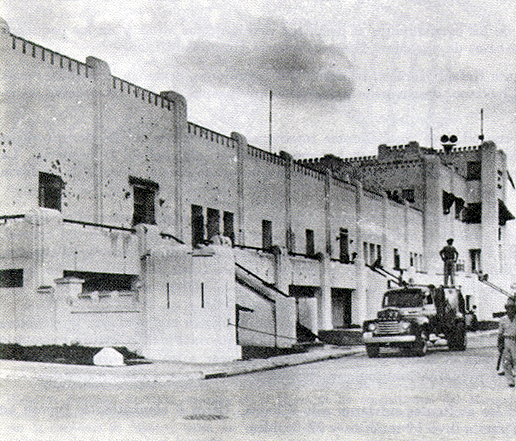Of Agendas and Effectiveness
Now that the events of the Cuban Revolution have been
summarized through the previous blog, it is time for me to examine the
effectiveness of this particular government. Since the country under
examination shall be Cuba during its revolution, there shall be two factions to
judge: Batista’s government, and Castro’s rebels attempting the overthrow of
Batista.
 |
| Moncada Barracks |
The so-called “problems” in the state at the time had been a
full-blown revolution, and much of the conflict was addressed with force. Towards the end of the elections, Batista had
chosen to seize power for himself, rather than letting another candidate such
as Castro win the Presidential election. In terms of Batista’s actions, I would
agree that he was successful in taking on power, but it is obvious that his
agenda was simply to take power for himself. In other words, it was his lust
for power that determined his actions. Castro on the other hand, not only
overthrew Batista for taking power for himself, but rather because he felt that
he was the right person with enough wisdom for fulfilling the role of the
leader. Both of these men were equally adamant in their ideals, and it is due
to this that they ended up in a conflict with each other.
Castro’s initial attempt to begin the revolution had failed
miserably, yet it still yielded another opportunity for him to be known by the
country. With Batista bringing him into the trial, he could almost be viewed as
a hero or a martyr. Castro’s speaking and debating skills were also quite
well-honed, since he his profession was that of a lawyer. However, the trial
was obviously biased, and it was simply a method for Batista to instate a harsh
punishment upon Castro. Castro was able to defend dozens of the rebels from the attack, and based his
arguments on the illegality of Batista’s government, and he had defended his
men so well that only 26 prisoners were found guilty.
 |
| Fidel Castro after the failed Moncada attack. |
Castro indeed proved to be quite skilled in the dealings of
court, but was still sentenced to 15 years in prison. However, he had spoken so
well during the court dealings that Batista’s standing among the population had
diminished greatly, while Castro was elevated to a somewhat heroic status.
The next few years were spent in guerilla warfare, as public
pressure had forced Batista to free Castro. During this time, Castro and the
rebels fought in hit-and-run battles where the tactics of the rebels proved to
be quite effective against Batista’s military forces. It is clear during this
time that Batista was slowly losing his hold on power, as his forces lost more
battles than they could afford. Eventually, Batista himself was overthrown, as
he had failed to destroy the rebels and wasted several opportunities.
Even though Castro may not have started the revolution as
well as he had planned, his capture had still managed to gain him a reputation.
Batista’s reputation was already slowly fading, and he had resorted to chasing
the few hundred rebels with thousands of soldiers. However, the tactics of the
rebels proved to be quite effective: Castro’s rebels used small skirmishes to
their advantage, rather than engaging in direct combat.
During the time of the revolution, Castro did not even have
control of a government, while Batista’s government was forcibly imposed. Nevertheless,
Castro had succeeded in his agenda of overthrowing Batista, and his tactics had
proven to be effective in the rebellion against the government.
Sources:






